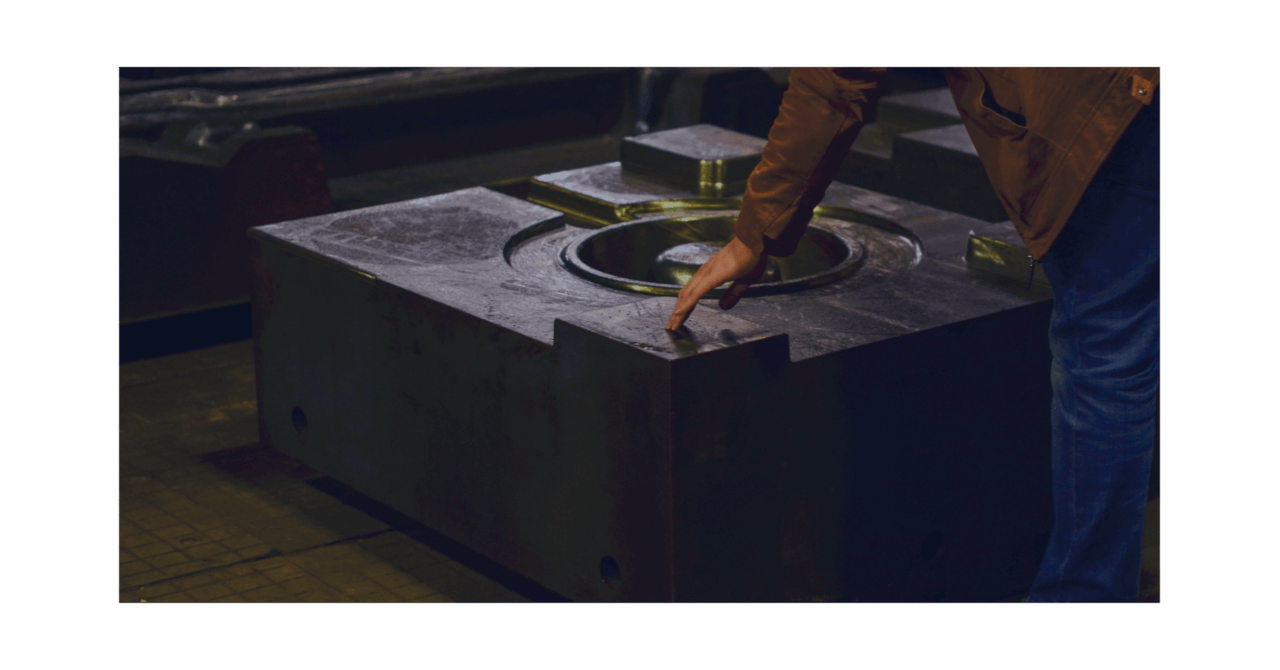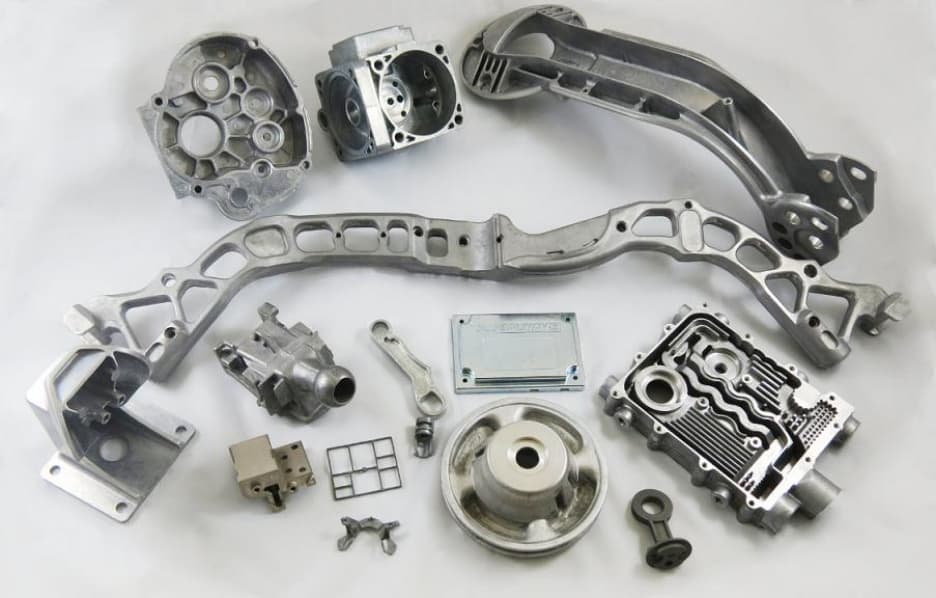The versatility of Aluminum Metal Casting in diverse industrial sectors
Comprehensive Guide to the Uses and Manufacturing Techniques in Aluminum Shop Procedures
The extensive overview to aluminum factory operations presents crucial insights into the varied applications of light weight aluminum across various industries. It methodically examines important manufacturing techniques, thawing procedures, and molding methods that add to accuracy and top quality. Furthermore, the guide highlights the relevance of ending up procedures that enhance both mechanical buildings and appearance. Understanding these components is crucial for any person associated with light weight aluminum manufacturing, questioning regarding best techniques and technologies in the field.
Overview of Light Weight Aluminum Spreading Applications

Additionally, the building market gain from light weight aluminum castings in architectural parts and building components, supplying resilience and resistance to corrosion. Durable goods, such as pots and pans and devices, also utilize aluminum castings for their warmth conductivity and visual allure. The electronic devices industry counts on aluminum for real estates and warmth sinks, ensuring effective thermal administration. Generally, aluminum spreading's flexibility allows it to meet varied market requirements efficiently, strengthening its relevance in modern manufacturing practices.
Trick Production Techniques in Light Weight Aluminum Factory
In the domain of light weight aluminum factory operations, different manufacturing strategies play a crucial function fit the final products that offer diverse sectors. aluminum foundry. Key strategies include sand spreading, die spreading, and investment spreading, each offering unique benefits based upon the application demands
Sand casting uses a mixture of sand and binder to develop molds, allowing for complex geometries at reduced prices. Pass away spreading, on the other hand, uses high-pressure injection of molten aluminum right into steel mold and mildews, making sure precision and a smooth surface area finish, ideal for high-volume production. Financial investment spreading supplies phenomenal dimensional accuracy and surface area quality, making it suitable for complex designs.
Furthermore, strategies such as permanent mold and mildew casting and gravity pass away casting further improve the convenience of light weight aluminum foundry operations (aluminum foundry). Each approach is picked based upon factors like production volume, component intricacy, and material residential or commercial properties, making sure favorable results throughout numerous applications
Melting Processes and Temperature Level Control
Reliable melting procedures and precise temperature level control are basic for attaining perfect aluminum shop operations. The melting of aluminum usually includes different approaches, including crucible melting, induction melting, and rotary melting, each with its own advantages and applications. Crucible melting is typically utilized for tiny sets, while induction melting gives efficient heating and consistent temperature distribution.

Molding Techniques for Accuracy Castings
Mastering molding methods is essential for generating precision spreadings in aluminum shop procedures. Different methods, such as sand, financial investment, and die spreading, play an essential duty in achieving wanted tolerances and surface area coatings. Sand casting, for example, utilizes a mixture of sand and binder to develop molds, enabling complex layouts and large elements. Financial investment casting, on the various other hand, uses wax check this patterns that are covered in ceramic product, resulting in very described and exact shapes. Die casting uses high-pressure injection of molten light weight aluminum into metal mold and mildews, making sure consistent measurements and rapid production prices.
Each strategy has its advantages and is selected based upon variables such as complexity, quantity, and mechanical properties called for. Effective mold style, consisting of airing vent and gating systems, additionally boosts the quality and accuracy of the completed item. Understanding these molding methods makes it possible for foundries to meet certain sector requirements and improve general functional efficiency.
Finishing Processes to Enhance Aluminum Parts
Finishing processes play a critical role in enhancing the performance and aesthetics of aluminum parts. These procedures, which adhere to spreading, aim to improve surface area top quality, corrosion resistance, and mechanical residential or commercial properties. Common techniques include machining, which refines measurements and surface area coating, and sprucing up, which improves visual charm by creating a smooth, reflective surface.
Plating is an additional substantial procedure, offering a sturdy oxide layer that protects against wear and rust while permitting for shade modification. Additionally, powder finish uses a vast range of surfaces and shades, making certain both protection and aesthetic improvement.
In many cases, parts may go through shot blasting to improve and get rid of pollutants adhesion for succeeding finishes (Casting Foundry). In general, these ending up processes are important for maximizing the performance and life expectancy of aluminum parts, making them suitable for varied applications across numerous sectors
Frequently Asked Questions
What Security Actions Are Required in Light Weight Aluminum Shop Workflow?
In light weight aluminum factory procedures, crucial precaution include personal safety tools, appropriate air flow, fire prevention try this out methods, regular equipment upkeep, training for employees on hazards, and preserving clear emergency procedures to ensure a risk-free working environment.
Just How Do Environmental Rules Impact Light Weight Aluminum Foundries?
Environmental policies considerably influence light weight aluminum factories by imposing criteria for exhausts, waste monitoring, and resource intake. Conformity frequently demands financial investments in cleaner processes and modern technologies, ultimately influencing functional prices and production effectiveness within the industry.
What Career Opportunities Exist in Aluminum Foundry Workflow?
Numerous job possibilities in light weight aluminum foundry procedures include duties such as factory specialist, mold developer, quality assurance examiner, process designer, and manufacturing supervisor, each adding to reliable manufacturing and cutting-edge procedures within the sector.
How Is Quality Assurance Achieved in Light Weight Aluminum Casting?
Quality control in light weight aluminum casting is accomplished via rigorous inspections, standard screening procedures, and the use of innovative modern technologies. Normal tracking of temperature level, structure, and dimensional precision guarantees items fulfill specified standards and customer needs.
What Are the Usual Flaws in Light Weight Aluminum Castings and Their Reasons?
Common defects in light weight aluminum castings consist of porosity, shrinkage, and surface roughness. Causes frequently come from improper mold style, inadequate putting techniques, and contamination, impacting the total stability and efficiency of the last product.
The extensive overview to aluminum shop operations presents important understandings right into the varied applications of light weight aluminum throughout different industries. Light weight aluminum casting plays a necessary function in numerous markets due to its adaptability and positive properties. Pass away spreading, on the other these details hand, uses high-pressure shot of molten aluminum right into steel mold and mildews, guaranteeing accuracy and a smooth surface finish, ideal for high-volume production. Additionally, strategies such as permanent mold and mildew spreading and gravity die casting additionally improve the flexibility of aluminum factory procedures. Understanding molding techniques is important for creating accuracy spreadings in aluminum foundry operations.